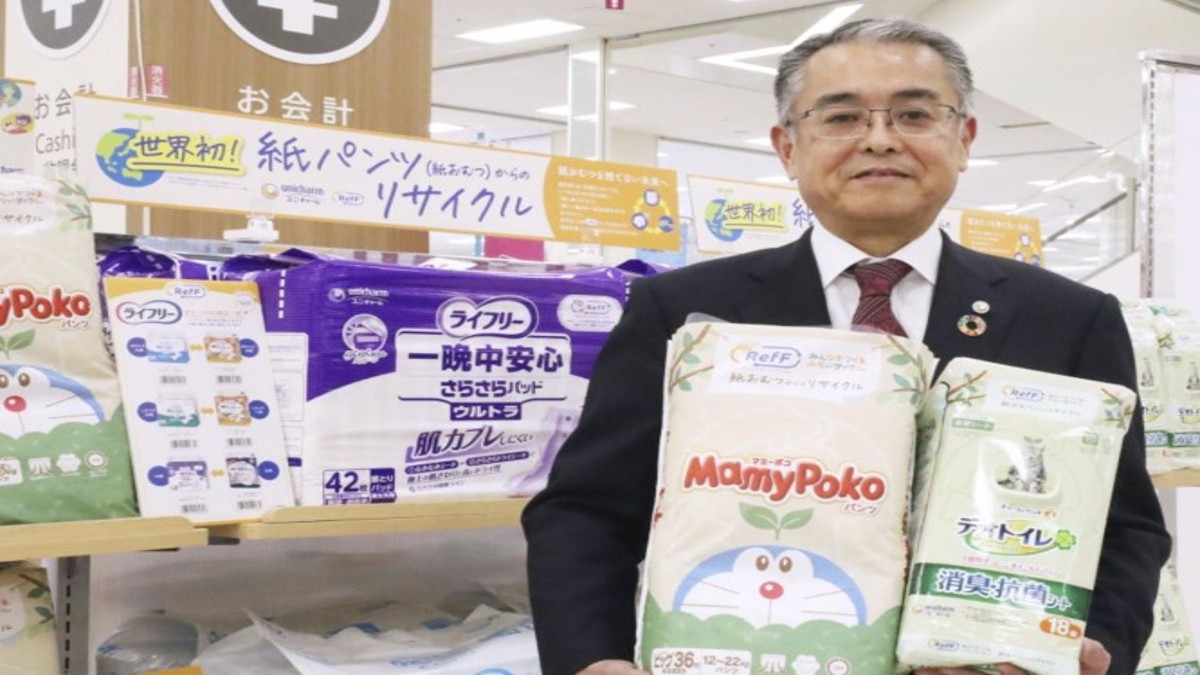Diapers, sometimes known as nappies, come in a variety of forms.
Depending on your needs, you can pick between tape diapers, diaper pants to disposable diapers or reusable ones.
A new type has been added to the list, though.
Last month, a Japanese manufacturer of hygiene goods started selling the first-ever “horizontally” recycled disposable baby diapers at shopping centres.
Here’s all we know about it.
What are horizontal recycling diapers?
Horizontal recycling is a form of recycling where products at the end of their lifespan are used as material in the creation of comparable goods.
According to Kyodo News, the horizontally recycled disposable diapers are manufactured by Unicharm Corporation.
The firm started manufacturing recycled adult diapers in 2022.
Initially, they supplied hospitals and senior living facilities with these diapers.
They eventually went on sale last month in 68 stores run by retailer Aeon Kyushu Co.
“We would like to transform a resource-intensive standard to a cyclical one. We have received approval from experts concerning the hygiene” of the diapers, senior executive officer of Unicharm, Tsutomu Kido, said as quoted by Kyodo News.
How are these recycled diapers made?
The elaborate diaper recycling process includes sterilising, bleaching, and deodorising the dirty diapers.
According to the firm’s press release, “First, used dirty disposable diapers are dewatered, crushed into small pieces, washed, and separated by material.”
Impact Shorts
More Shorts“There is still some dirt and some odours at this stage, but the pulp extracted from disposable diapers is subjected to ozone treatment (sterilisation, bleaching, and deodorisation).”
In the next process, the material is “returned to a safe and clean condition and then used again to make new disposable diapers,” the release added.
One benefit of horizontal recycling, according to the business, is that the same materials can be used again and again.
The primary materials used to make disposable diapers are plastic, polymers derived from petroleum, and wood pulp.
“If these materials can be used repeatedly, then we can reduce the amount of wood and oil resources used,” it added.
According to Kyodo News, the company has worked on the recycling process along with two local governments in Kagoshima Prefecture.
For children, a packet of 42 diapers costs 1,078 yen ($7), which is a little more than the standard disposable diapers offered by the company.
“Customers who have used these products said they were comfortable and felt no different from regular (diapers),” The Mainichi newspaper quoted an official.
How diapers are a matter of concern?
The disposable diaper, whose market is worth over $70 billion annually, is one of the biggest contributors to public waste.
Over 300,000 disposable diapers are disposed of incorrectly, burned, or sent to landfills every minute, according to ZME Science.
The Japan Times reported that the amount of nappy waste from homes and senior care facilities increased from two million tonnes in 2015 to 2.2 million tonnes in 2020 as a result of Japan’s ageing population.
The proportion of disposable diapers to total waste emissions is predicted to reach seven per cent by 2030, as per Japan Forward.
An estimated 20 billion disposable diapers are discarded annually in the United States alone, producing more than 3.5 million tonnes of garbage.
Because they are so lasting, disposable diapers produce very serious pollution. It can take up to 500 years for a single disposable diaper to decompose, as per ZME Science.
Soil and water quality may be at risk while the chemicals and plastics are still present in the environment.
Of course, then, each nappy is then filled with human waste.
This mixture can aid in the spread of viruses and pollutants in the environment if it is disposed of in a landfill.
Both governmental intervention and consumer effort are required to lessen the negative environmental effects of disposable diapers.
With inputs from agencies
)